ALSACE VOSGES - Lingekopf - le Linge
Year of visit: 2004, 2007, 2008, 2010
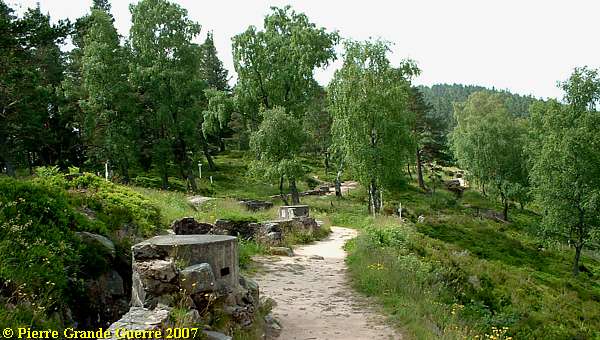
We park our car on the Collet du Linge to visit the French trenches, and later on this page the German trenches and bunkers of le Linge or the Lingekopf, scène of fierce battles from June until October 1915. The Lingekopf is also the site where my late wife, Chris van der Neut (08-05-2018), co-founder of this website, came with the idea in 2004 to found this website about our explorations along the Western Front. Without her idea this website probably would not have existed!
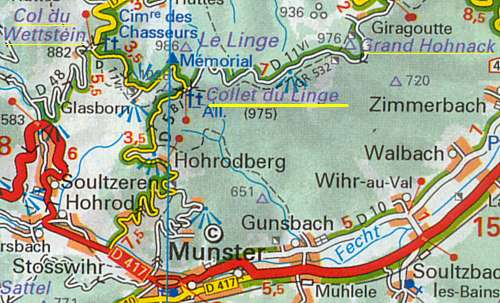
From the opposite Schratzmännele we cross the road of the pass, the Collet du Linge, ...

... to the Lingekopf (986m.).
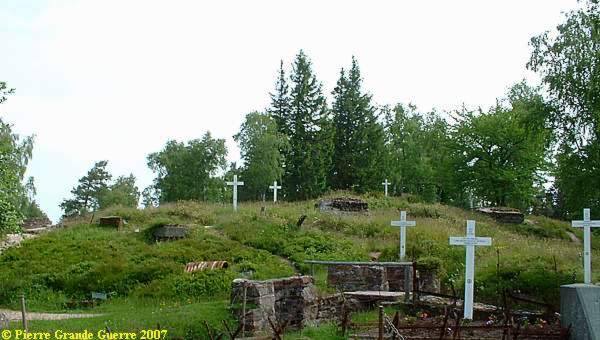
We make a walk, first along the French relics. Next we will visit the well organized and well preserved relics of the German trenches and bunkers of their 1st and 2nd lines.
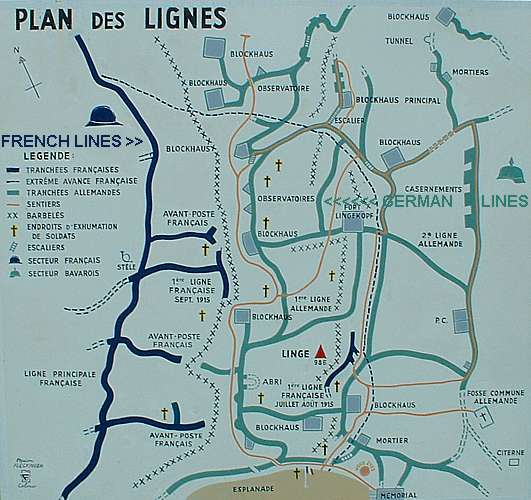
For me this battlefied is one the most impressive, I have ever visited.
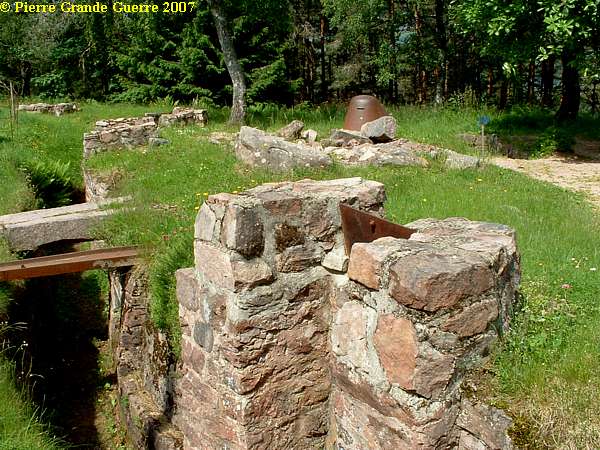
These trenches, along the road, formed the zig-zagging German 1st line in September 1915.
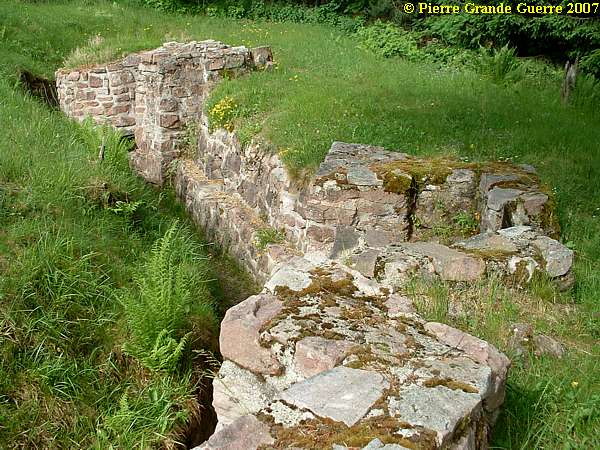
An armoured observation post, ...
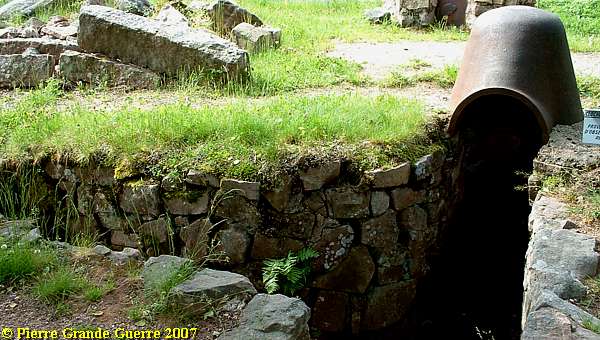
... in the shape of a church bell.
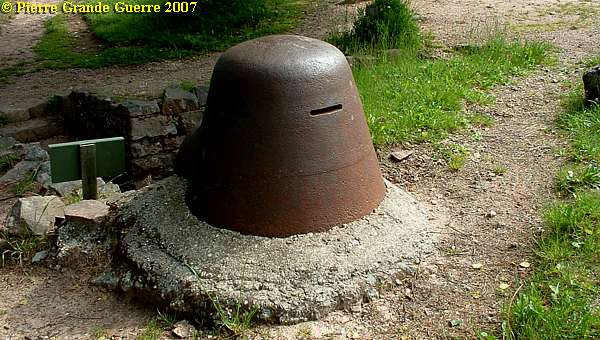
The Battles of the Linge 1915 - Collet du Linge, Schratzmännele, Lingekopf, Barrenkopf, and Kleinkopf
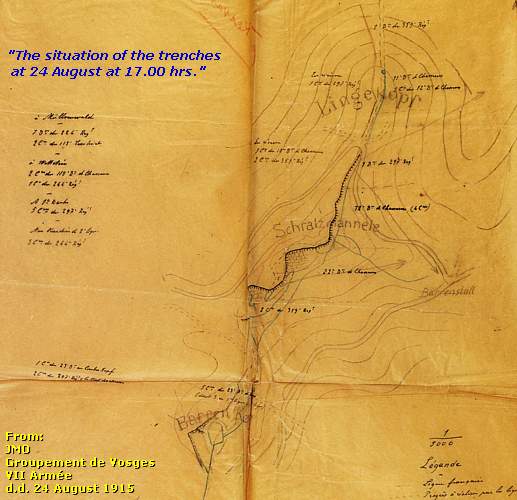
On 26 March 1915 General D'Armau De Pouydraguin takes over the command of the 47th Infantry Division from General Blazer. While the combats continue all along the Vosges, General De Maud'huy, in command of the VIIth Army, added an additional division for his planned offensive at Le Linge: the 66th Infantry Division.
Before the offensive of Le Linge of 15 June 1915, the 47th and 66th D.I. began an offensive at Metzeral
.
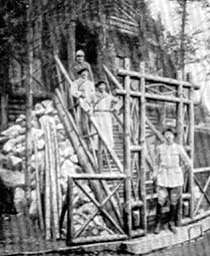
During one week, the French troops did progress some 5 kilometres. General de Pouydraguin suggested to continue the operations through the valley of Munster. But Joffre’s “Grand Quartier Général” ordered to stop the offensive through the valley. Joffre preferred the tactic of massed waves of attacks over the summits.
15 June 1915 - 70e B.C.A. raids the Lingekopf
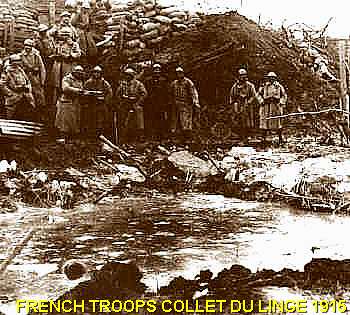
On 8 April 1915, the headquarters of the 47th D.I. had been informed of the considerable strength of the German fortifications of the Bavarian Landwehr Infanterie Regiment 1 on the ridges of the Lingekopf.
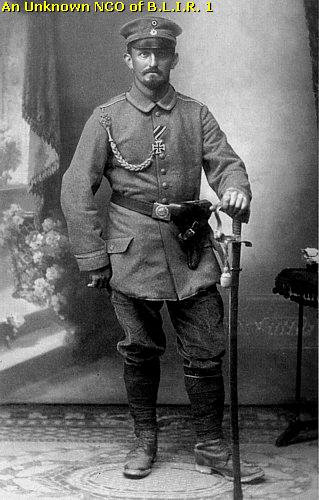
During three months the 3e Brigade des Chasseurs, reinforced by two companies of the 59e Régiment d'Infanterie Territoriale, digged on their side of the line their trenches and constructed their fortifications.
On 15 June 1915 a patrol of the 70th B.C.A. (70e Bataillon Chasseurs Alpins) tried a raid on the Crête, the ridge of the Collet, meeting fierce German resistance.

On 20 June 1915, being on the alert, the German troops bombarded the French positions, strengthening their own defences. De Pouydraguyn‘s 47th Division, made a second attempt to attack the Munster valley. The lines of Le Linge were confided to a new and young division, the 129th Infantry Division of General Nollet, consisting mostly of young soldiers of around 20 years old.
20 July 1915
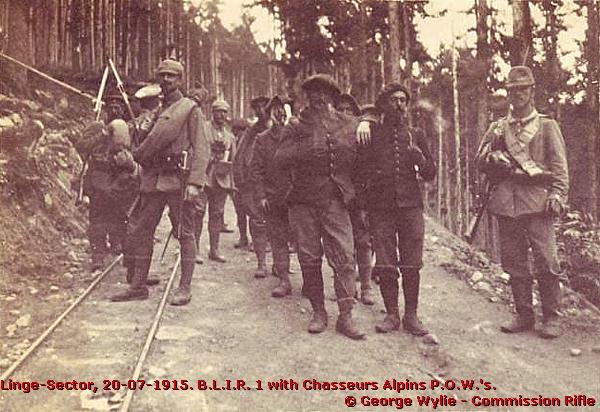
On 20 July 1915 General Nollet's 129th D.I. attacked the Collet du Linge, the Schratzmännele, the Lingekopf, the Barrenkopf, and the Kleinkopf. The 14e and 54e BCA under command of Major Reynies attacked the Lingekopf. The 30e and 70e BCA attacked Schratzmännele and la Courtine near the Barrenkopf. The next day the French troops were ordered to withdraw to their original positions.
22 July 1915
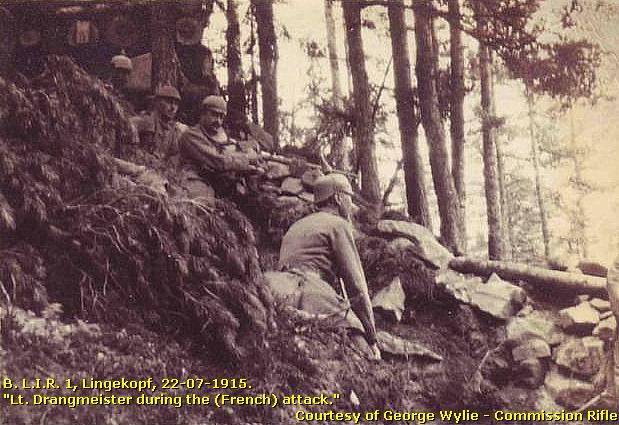
On 22 July the French launched another attack with 14e , 30e BCA, and two companies of the 70e BCA. The attack failed because of an ill functioning artillery.
26 July 1915
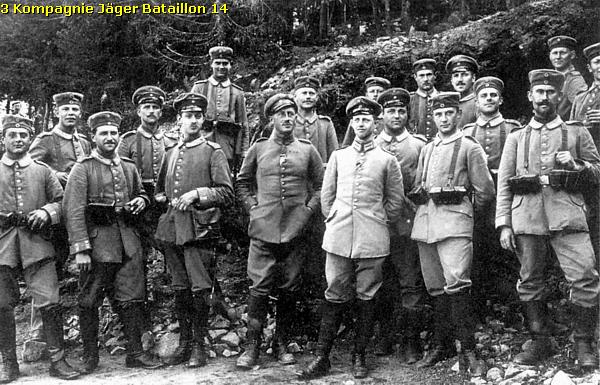
The 26th was a day of haze, rain, and mud. This time the preliminary bombardment was successful. The French battalions of Chasseurs Alpins, the 14e and the 30e BCA, attacked at 18.00 hrs. The 30e BCA captured the ridge of Lingekopf, including the German 2nd line (out of 3), with very many losses! The 14e BCA occupied the Collet ("small pass") du Linge. Three attacks of German troops at the Collet were pushed back during the night, and until noon of the 27th.
During the night and the next day fresh reinforcements arrived, consisting of German elite units of the Jäger Bataillon 14 and the Garde Schutzen Bataillon.
27-31 July 1915
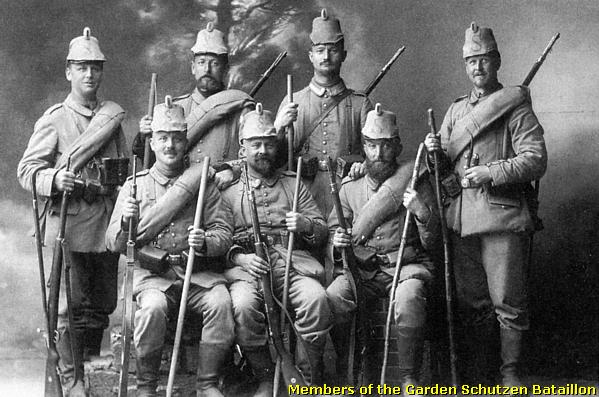
In the beginning of the afternoon of 27 July the French attacked the Schratzmännele and the Barrenkopf. The 15e Bataillon Chasseurs à Pied (BCP) occupied only temporarily the Barrenkopf. Though both sides suffered that day heavy losses, the Chasseurs made that day some 280 "rifles" prisoner of war.
On 29 July the French attack restarts at 15.30 hrs.. The 5e BCP attacked the Schratmännele from the Collet du Linge without success. The 120e BCP and the 11e BCA attacked at la Courtine near the Barrenkopf. The 11e BCA knew to reach the machine-gun post at the Barrenkopf. At 30 July the Germans launched an artillery bombardment, which would not prevent the French to launch another attack at the Schratzmännele 2 days later.
August - September 1915
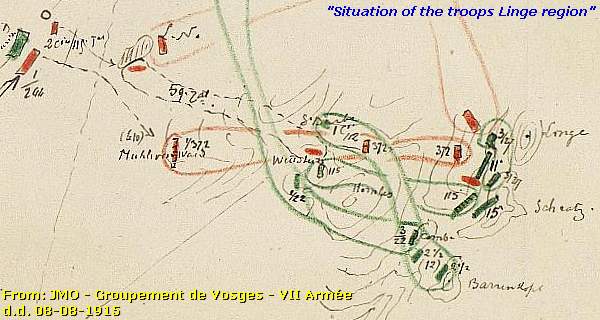
From 1 August until 30 August 1915 several French attempts were done to conquer the top of the Schratzmännele. In particular the first five days of August were filled with bombardments, intense infantry attacks and counter-attacks.
On 4 August 1915 the Germans launched a huge artillery bombardment, using gas shells, and some 40.000 shells on a front of 3 km long from the Lingekopf to the Kleinkopf. On the same day the 5e BCP lost his commander, Commandant (Major) Barberot.
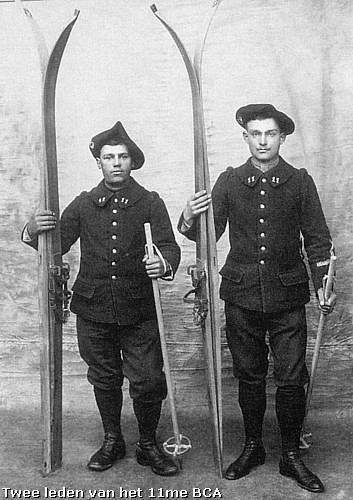
On 18 August the battles intensified again. The 11e BCA conquered the Fort Lingekopf on the summit, but lost it again several hours later. The 27e BCA knew to reach the ridge of the Schratzmännele and to consolidate their positions.
On 22 August the 22e BCA captured the central bunker on the Schratz. The 23e BCA attacked again the bunkers at the Barrenkopf and occupied it for a few hours until a German nightly counter-attack forced them to retreat to la Courtine. Until the 24th there were attacks and counter-attacks from both sides. During these days the ridges of Le Linge changed many times of possession.
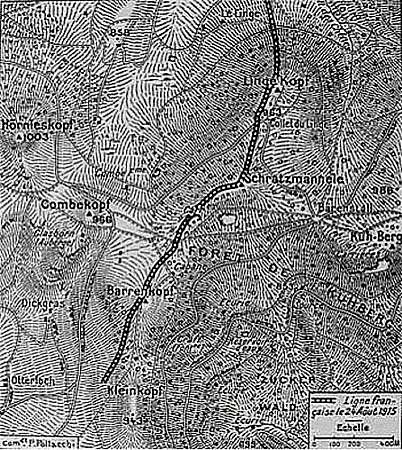
On the 24th of August the French stopped their offensive. The 129th D.I. of General Nollet had been relieved by the 47th D.I. of General de Pouydraguin. De Pouydraguin inspected his French lines: a distorted battle front, zig-zagging, unprotected, below remarkably well organized German fortifications.
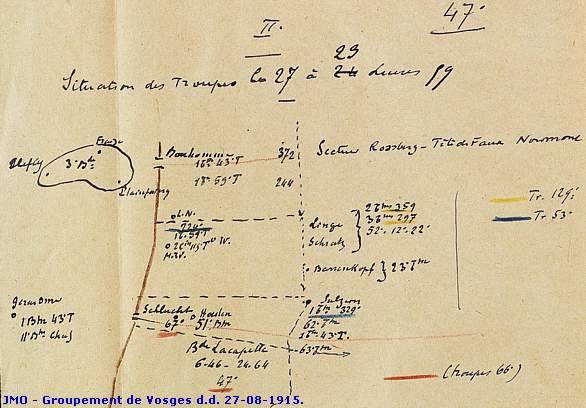
On 31 August at 4:00 AM the Germans bombarded again with gas shells. At 5:00 PM of the same day Bavarian infantry assaults followed. The French counterattacks resulted in occupying a part of the lost ground. The fights continued until 9 September. On 9 September 1915 there were new German attacks with gas and flame-throwers. The French counter-attacks failed.
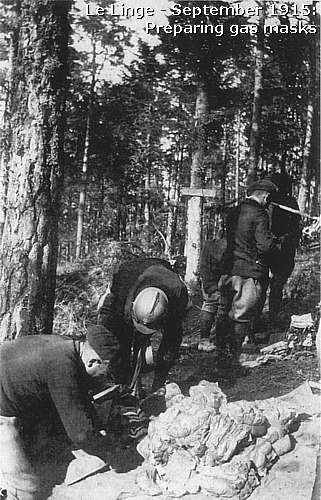
October 1915
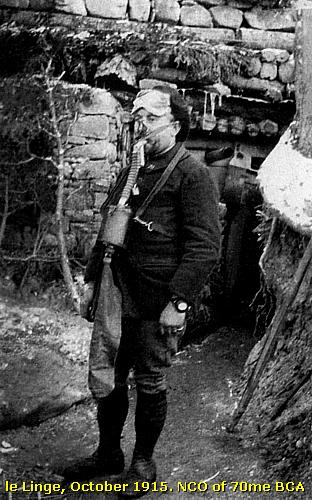
Until 12 October the Germans tried to conquer the Schratzmännele, but for the time being the French kept them of this summit. On 12 October 1915 the Germans launched again an attack at the Collet du Linge and the Schratzmännele with flame-projectors. At 3: 00 AM of the 13th, 2 French battalions deployed a new counterattack, which failed. It would be the last French attack along this front sector.
In the end the French lost the summits of the Lingekopf, the Schratzmännele, and the Barrenkopf. On 16 October 1915 the Germans attacked the French in their original lines for the last time. But the French knew to force them to withdraw to their original German 1st lines, as it has been preserved in the situation of nowadays.
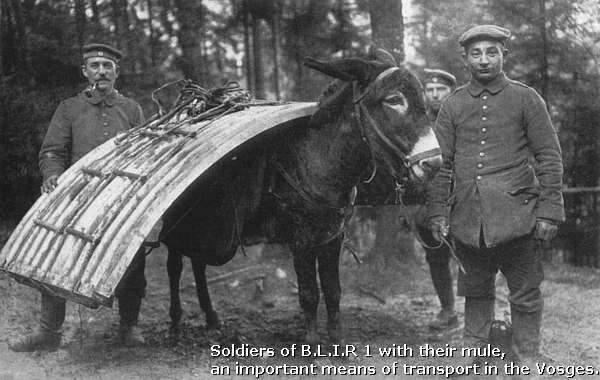
We enter the park of the "Mémorial du Linge", passing the interesting visitors centre and museum, following the eastern foot path upward.
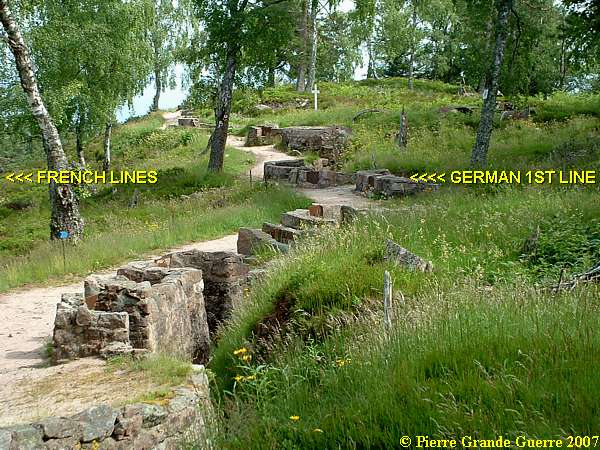
The No Mans Land here was left of the footpath. It was not not more than 10 m. or less away from the French 1st line, on which we concentrate from now, and it's advanced posts along a steep slope.
The French Lines
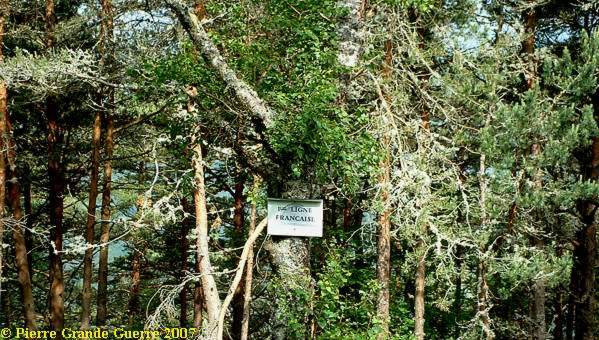
Everywhere on the ridge you will see white crosses and black crosses. These crosses mark the locations of relatively recently exhumed bodies of soldiers, missed in action in 1915.
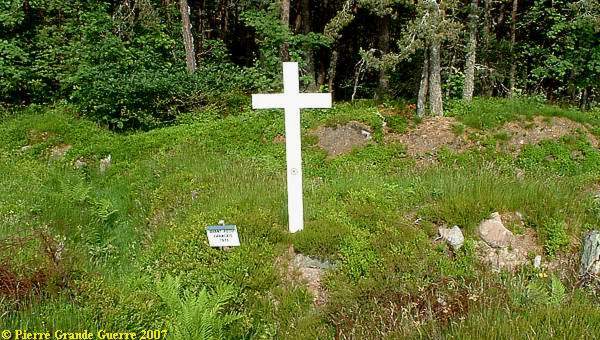
White crosses for French soldiers, black crosses for German soldiers.
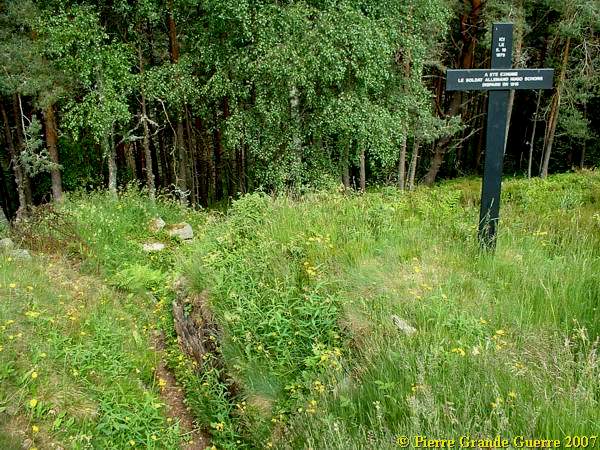
As the battlefield is still not cleared, some parts are still too dangerous to enter.
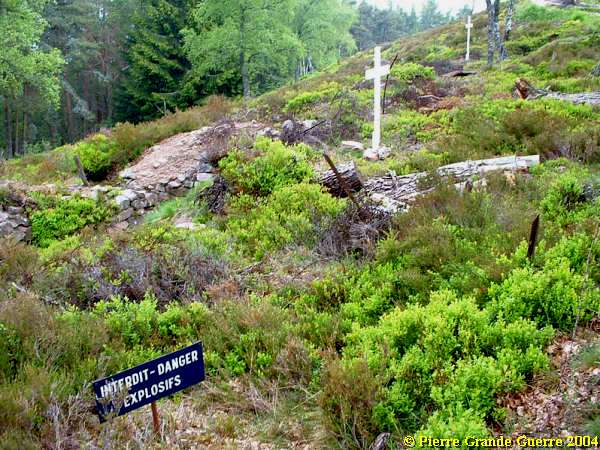
For an observation of the French lines you are obliged to stay on the path.
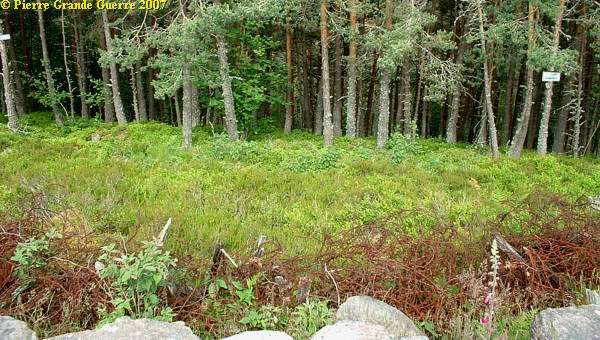
Sometimes the French barbed wire and advanced posts were not more than 2 m. away from the path.
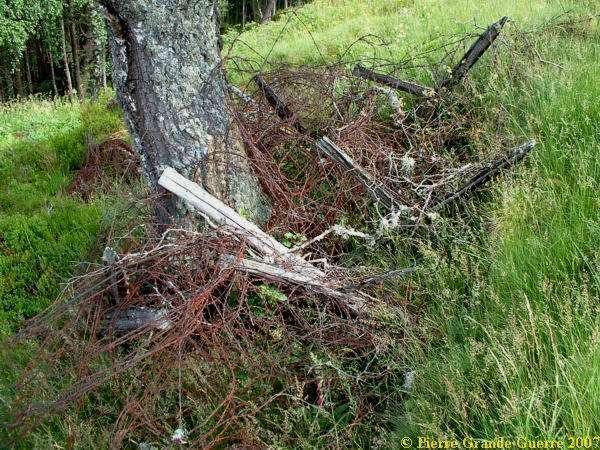
We walk slowly upward to the summit.

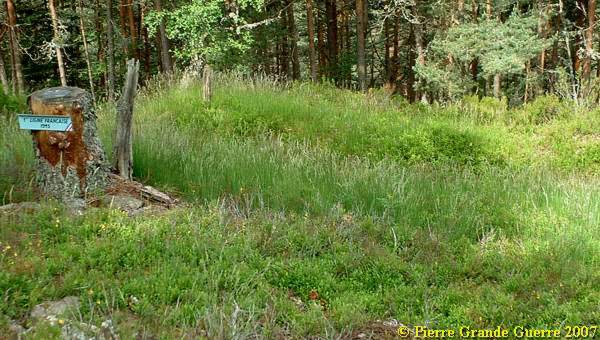
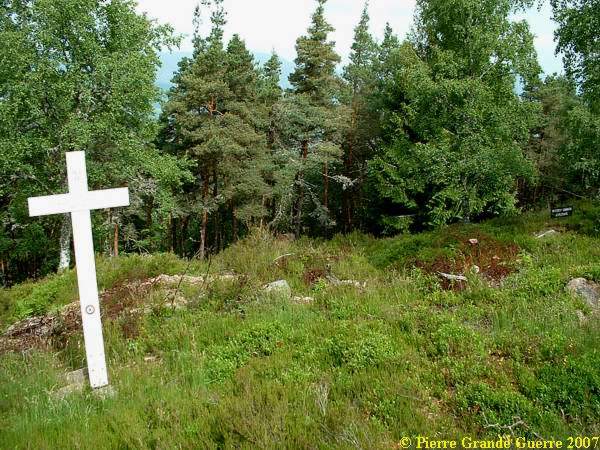
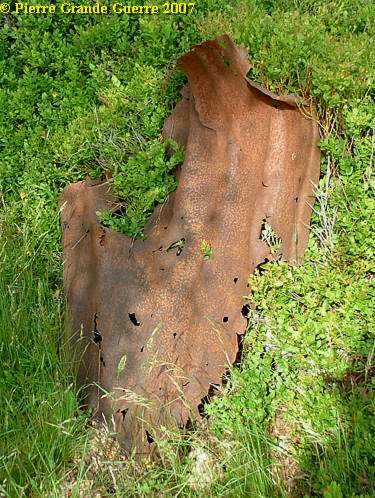
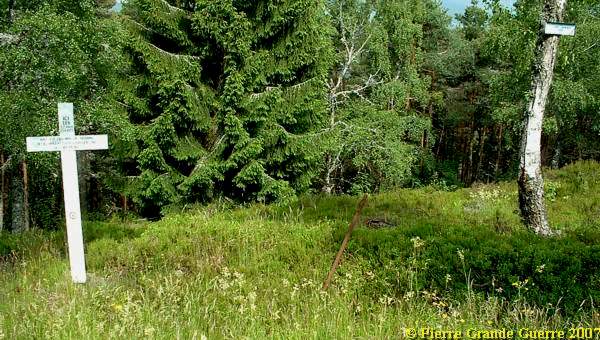
Typical for the Vosges front: trenches constructed with local rocks.
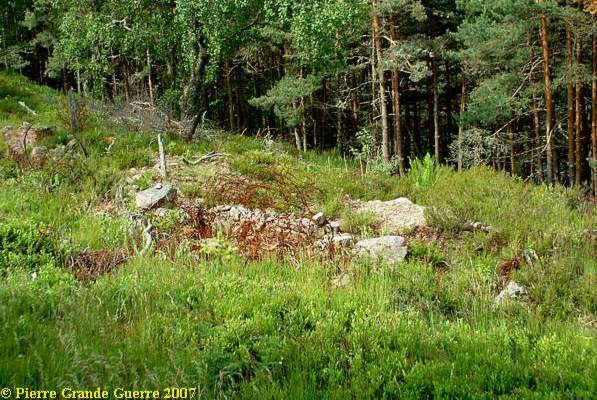
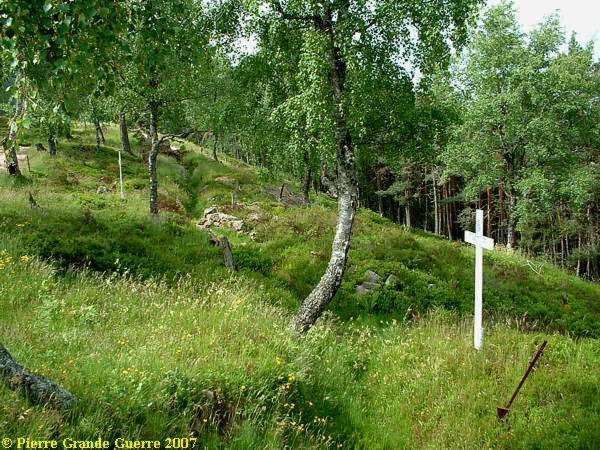
View over the former French 1st line at the Schratzmännele.
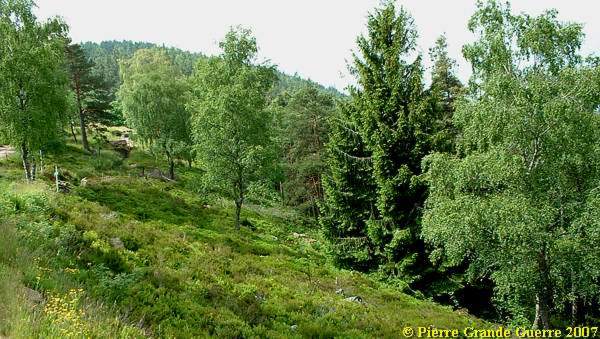
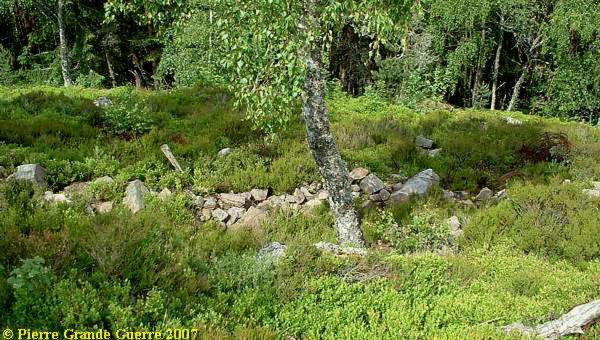
View in the direction of the Col du Wettstein. The French 2nd and 3rd lines were under these trees.

We arrive at the highest point of the French 1st line, ...
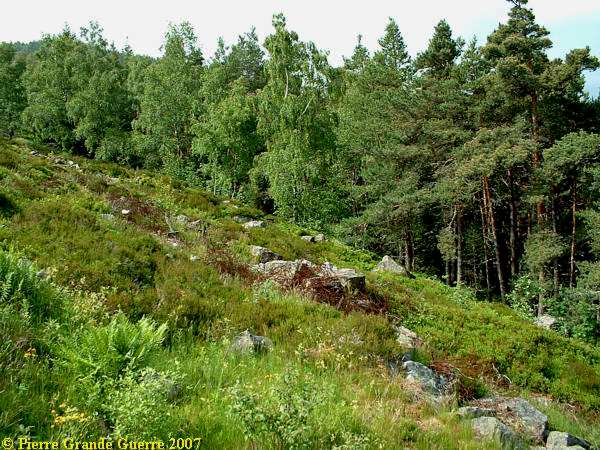
... and advanced posts, facing the nearby German 1st line trench.
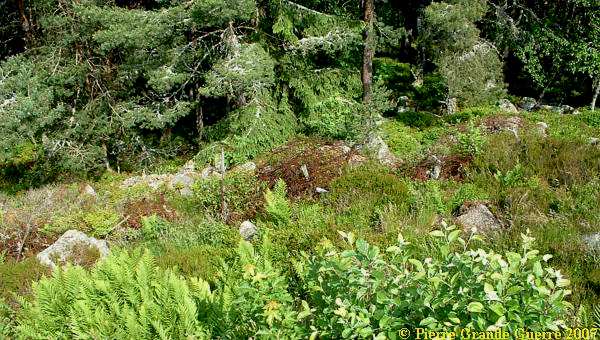
We return downward the path to the entrance to begin our walk again.

This time however to focus on the German 1st line, on the east (left) side.
Lingekopf - German Lines

We start again with a view at the top. The summit itself is still forbidden terrain, because of the danger of explosives, and the possible presence of bodies of soldiers, missing in action.
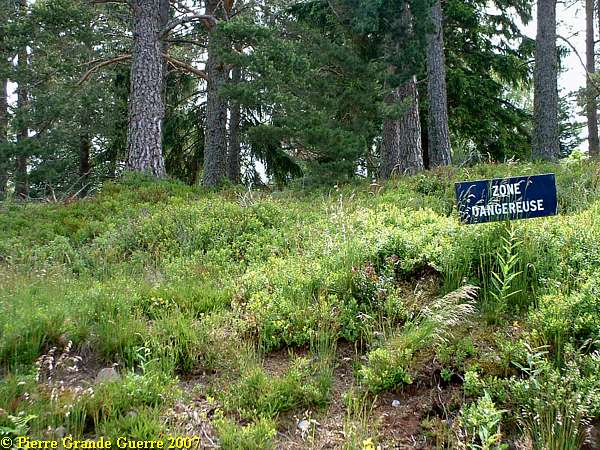
But as long as you stay on the paths or in the German trenches, you are free to visit anywhere you will go.
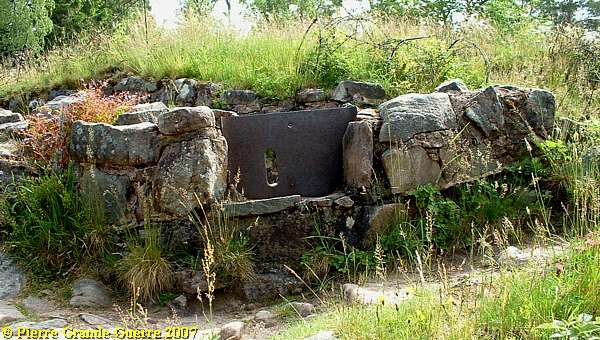

For now we follow again the main western path in No Man's Land, concentrating on the German 1st line.
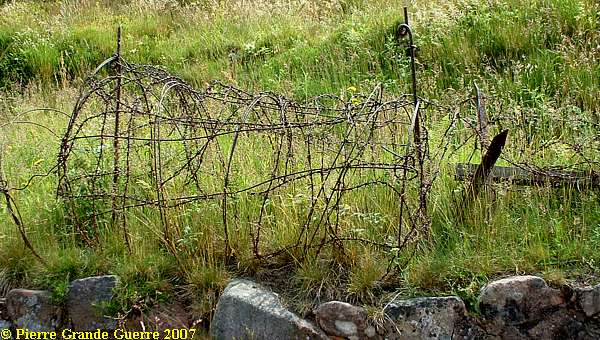
My late wife, Chris, just passed the first, southern "Blockhaus". The French line of October 1915 is just 2 m. from the path.
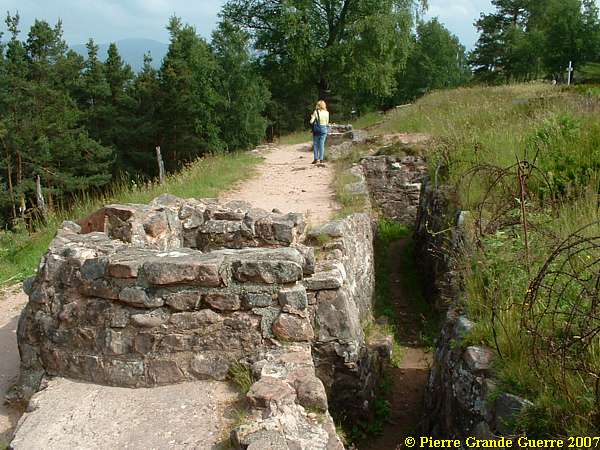
As we continue, ...
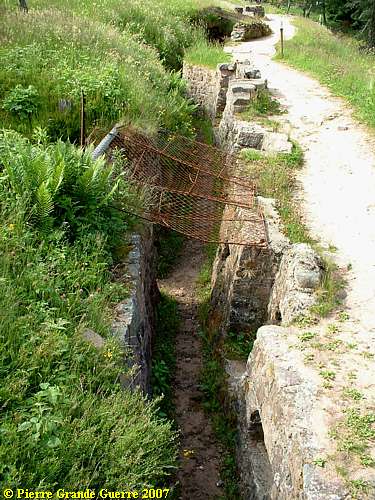
... we remark this shelter bunker.
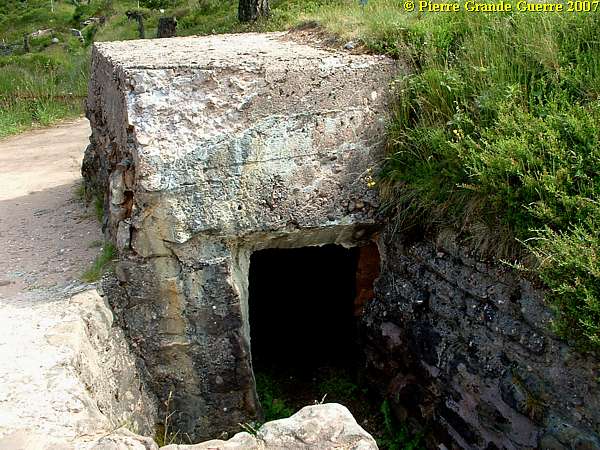
It shows how well organised and well built the Germans made their bunkers: steel U bars covered with lots of concrete.
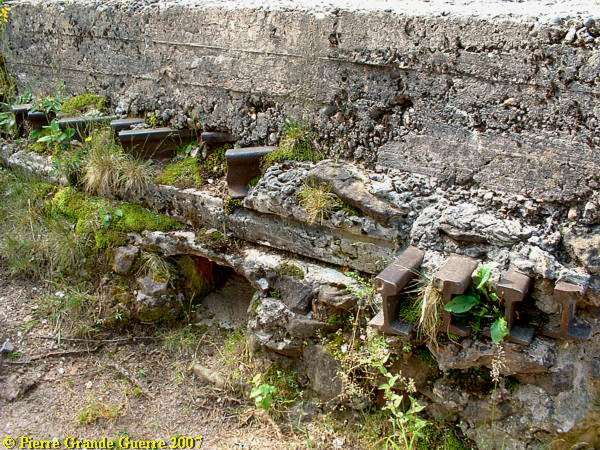
Oberleutnant Dose's photos of the Lingekopf
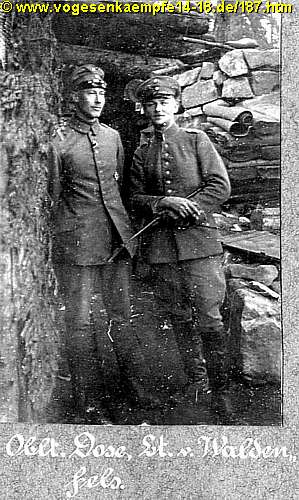
On this page you will find some photo's of the unique collection of period photographs by Oberleutnant Dose (left on the period photo above) of the Prussian 187th Infantry Regiment, who served at the Lingekopf or le Linge in October 1915.
I am very grateful for the courtesy of my late penfriend, Herr G.F. Dose (+12-09-2008) from Germany, who allowed me to show you some samples of this well protected and well saved extraordinary collection of his father Oberleutnant Dose.
Herr Gerhard Dose managed some interesting websites. For this topic about the Lingekopf I also do warmly recommend a visit to Herr Dose's English version of www.vogesenkaempfe14-18.de/187.htm based on the notes of Oberleutnant Dose and the war journals of the 187th Infantry Regiment.
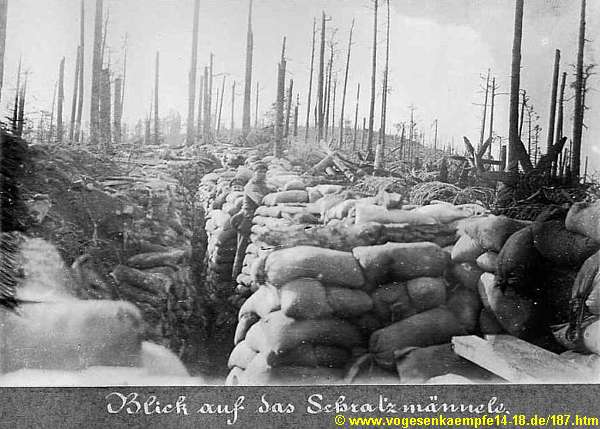
After this intermezzo we continue our walk along the German 1st Line.
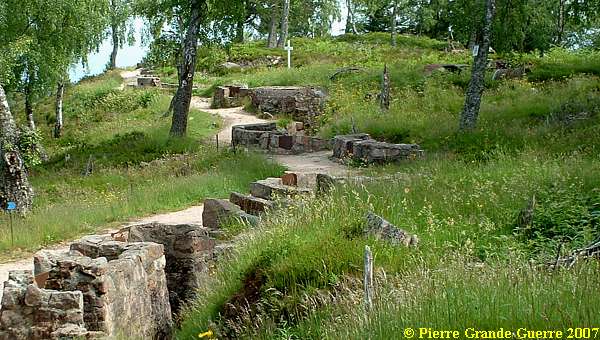
Steel rifle shields.
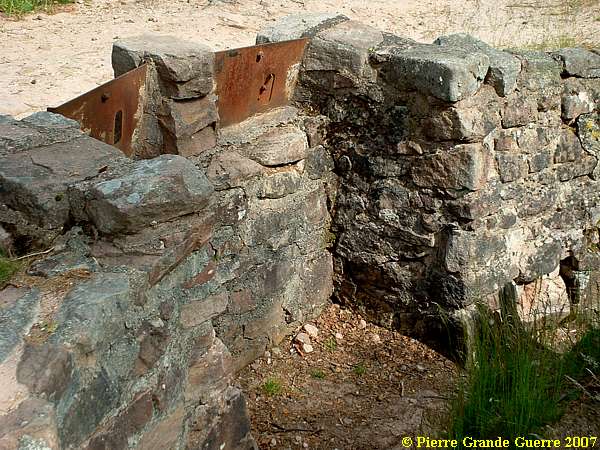
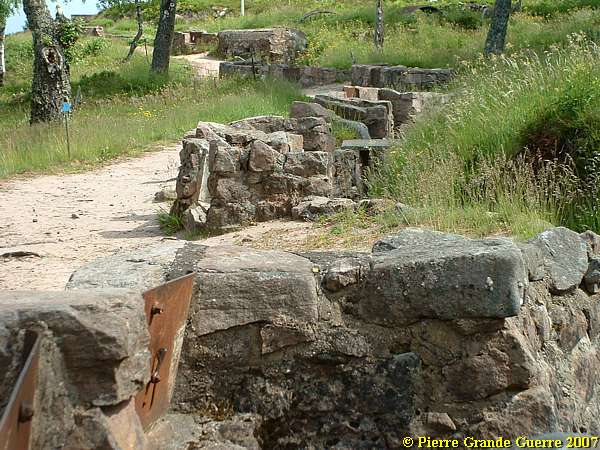
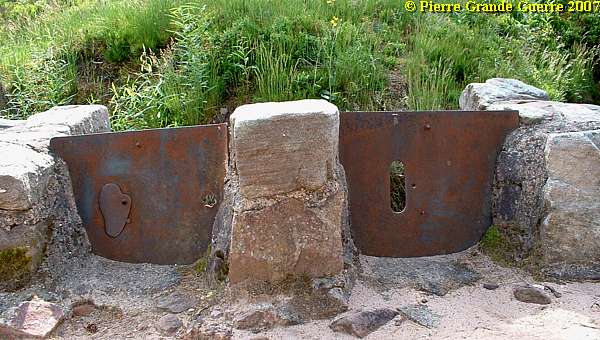
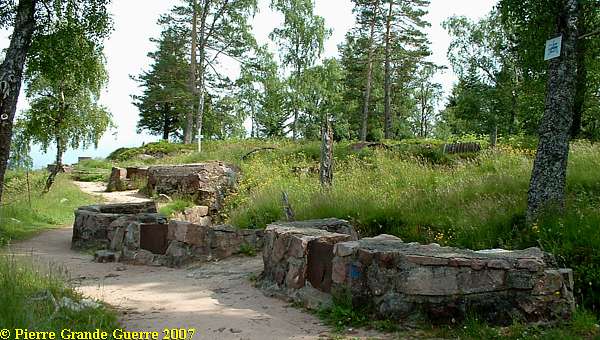
An observation bunker.
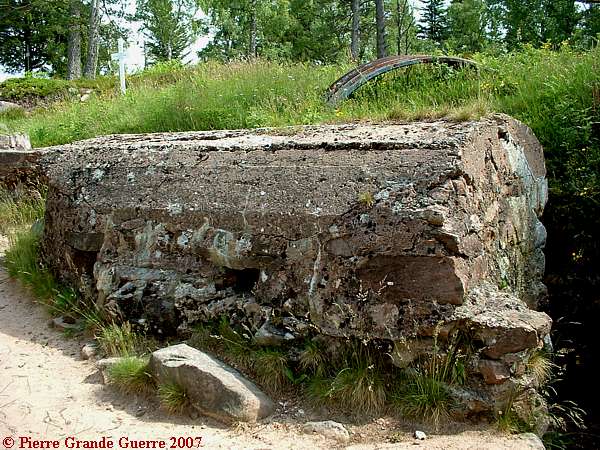
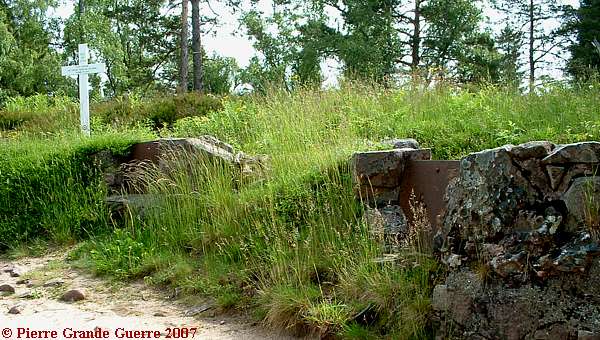
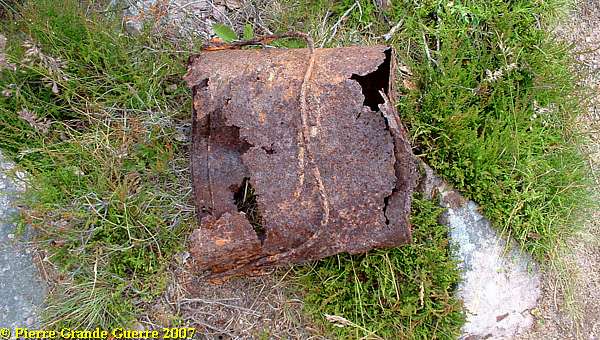
The concrete pill-boxes served as observation bunkers.
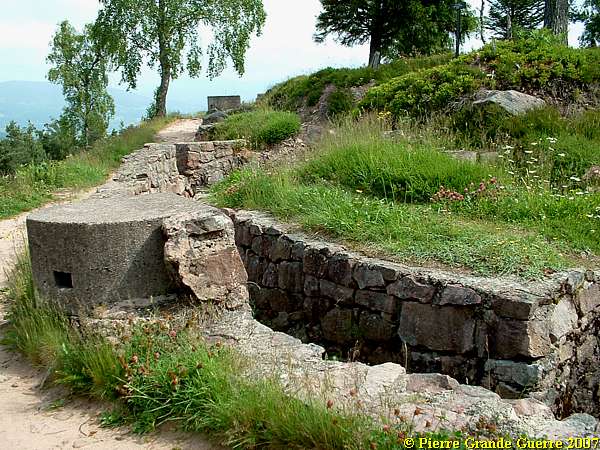
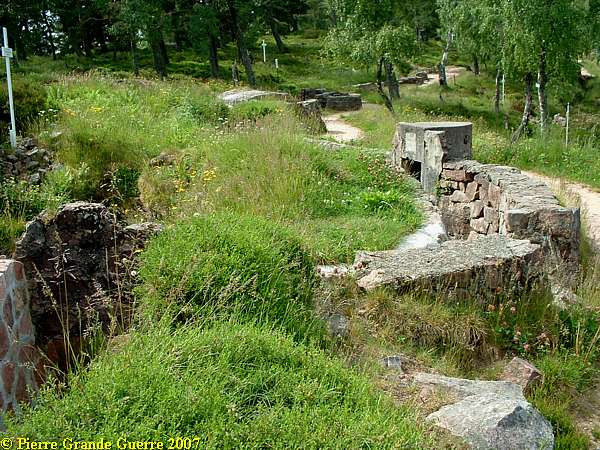
In the meantime we have reached the most northern "Blockhaus", ...
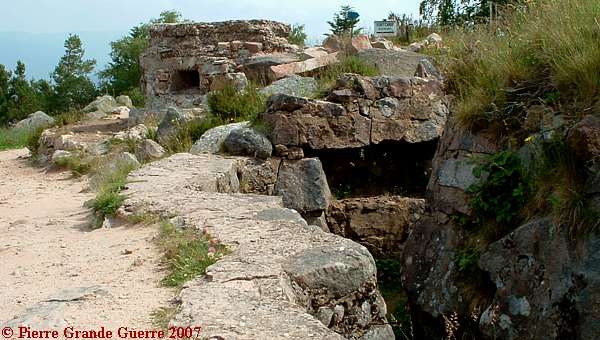
... an observation bunker at the highest point of the 1st line trench, which offers this view in the direction of the Col du Wettstein and the Tête de Faux.
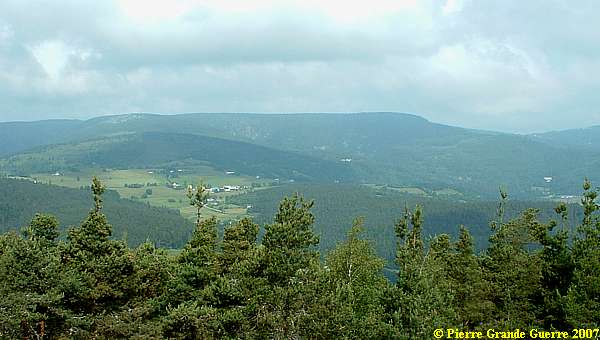
Of course I had to take a look inside this observation bunker. These trenches and fortifications were often constructed or repaired under enemy fire!
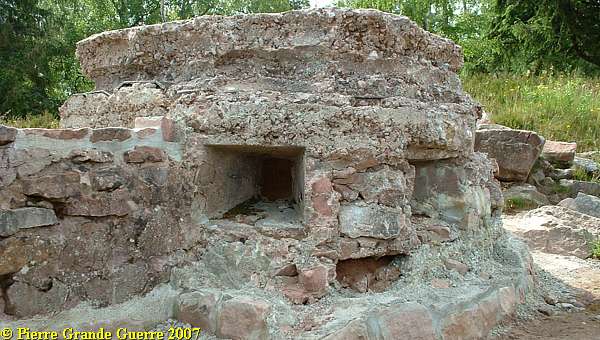
I went down in the trench to find the entrance.
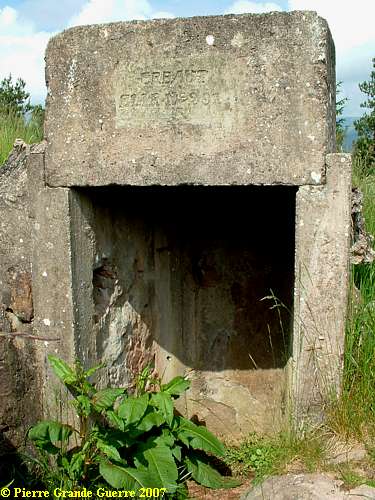
The inscription tells, who constructed this concrete observation post:
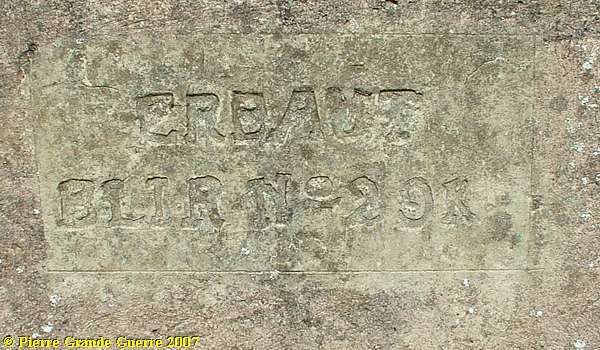
In the next photo's I will show you the view from this bunker.
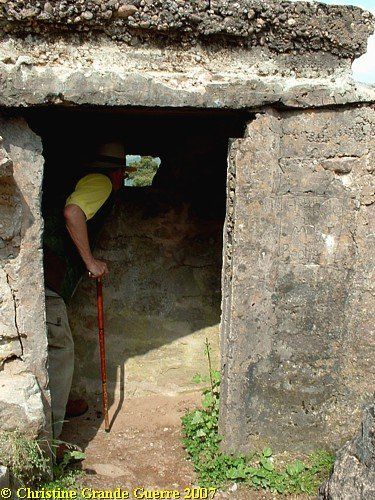
At the inside again a graffiti-like inscription:
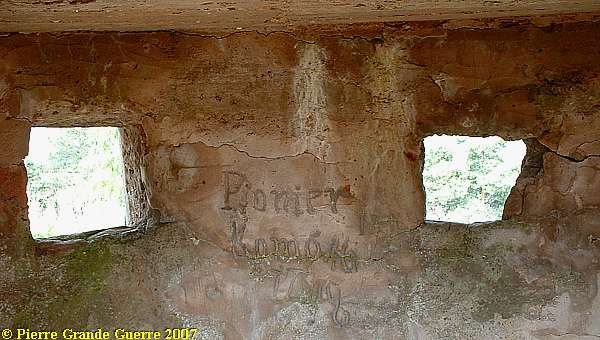
View from the left window.
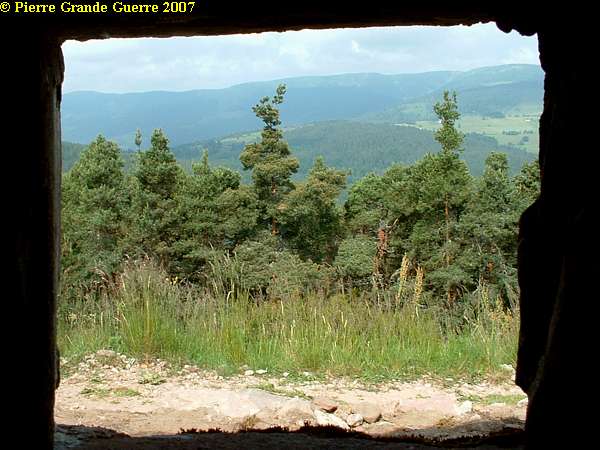
View from the right window over the French line.
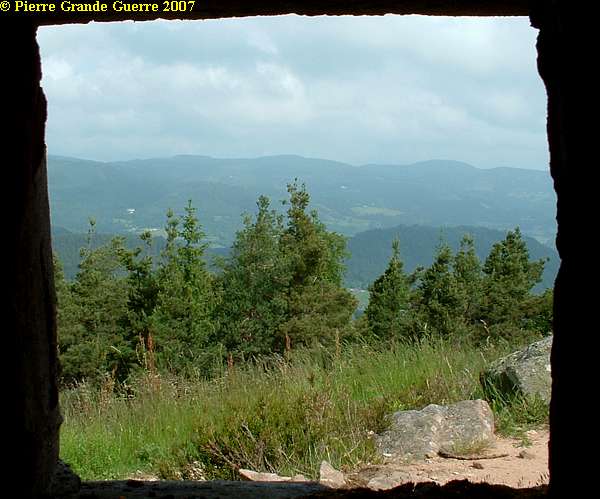
In the German 1st line trench we try to track another interesting observation post.
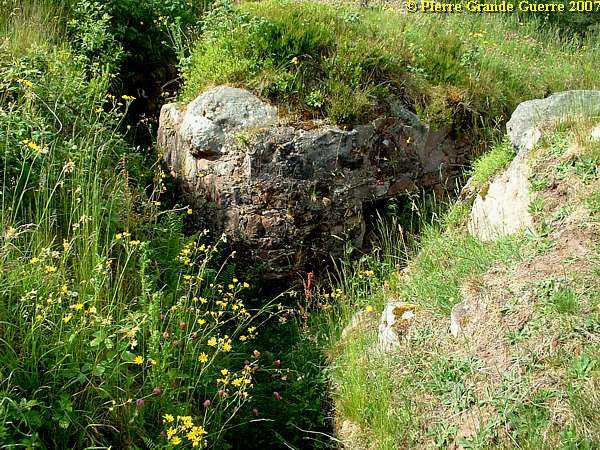
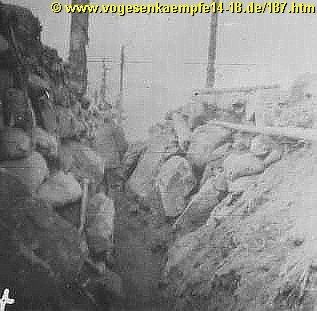
We pass some firesteps, ...
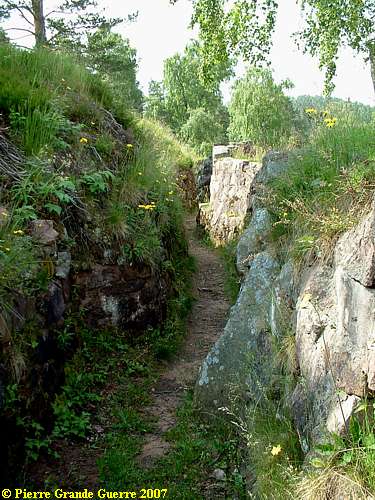
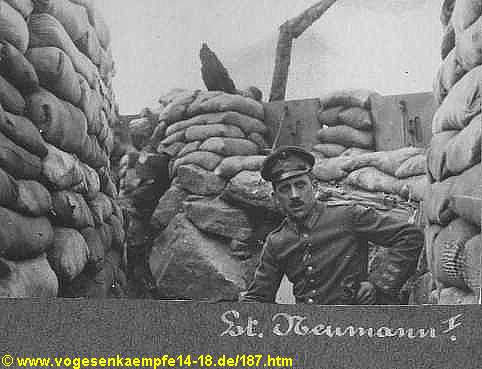
... with armoured rifle shields, ...
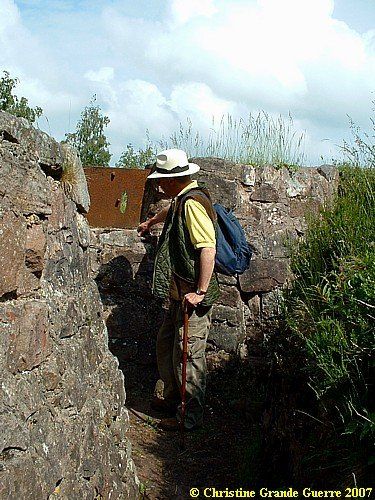
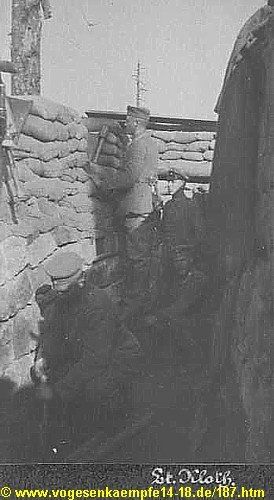
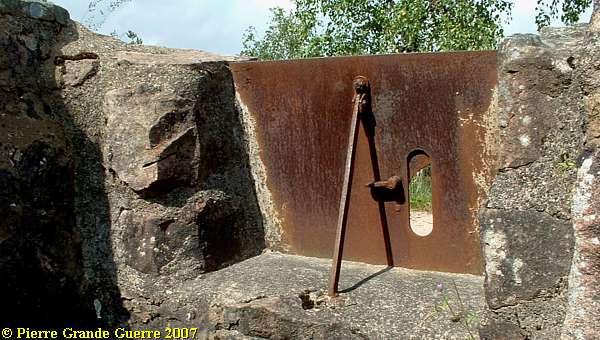
... to inspect this observation bunker.
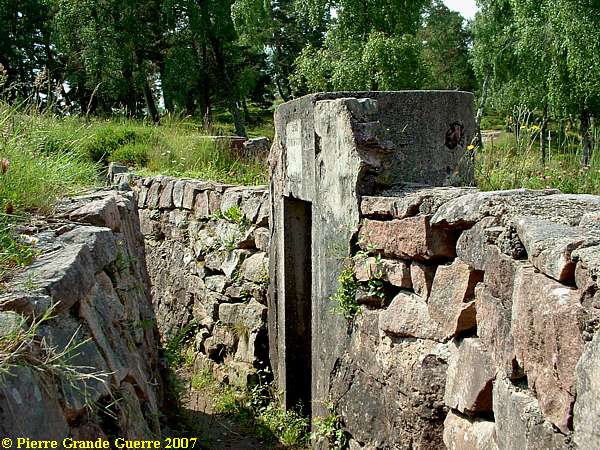
The Bavarian Wilhelm Betz was very proud of his bunker, improved in June 1916.

He autographed "his" bunker twice, once on the outside, ...

...and another one on the inside of the observation post. The inscriptions form proof of the improvements, the Germans would still make on their trenches and fortifications long after the end of the battles in October 1915.
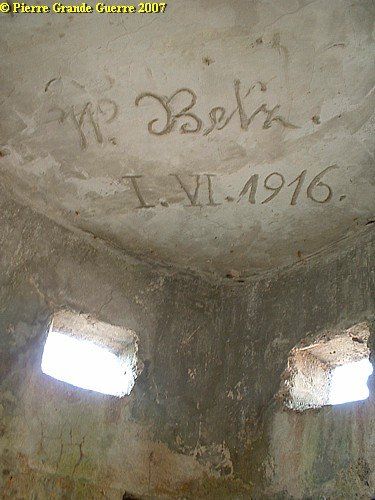
View from the left window.
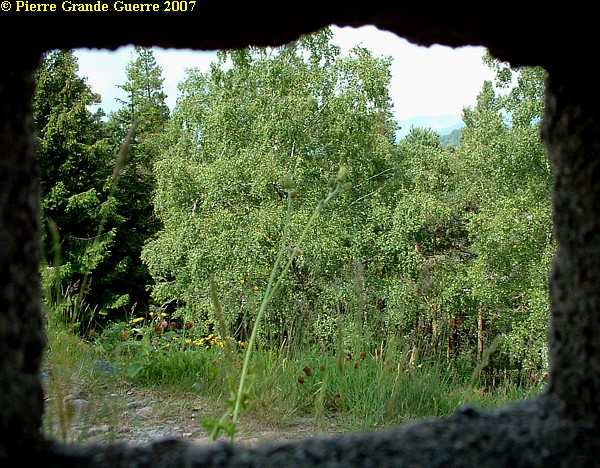
A Reminder : On 9 September 1915; new German attacks, with gas and flame-throwers. The French counter-attacks failed.
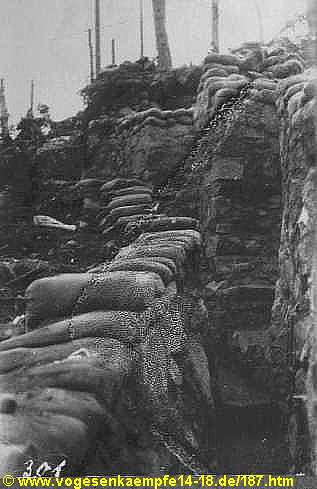

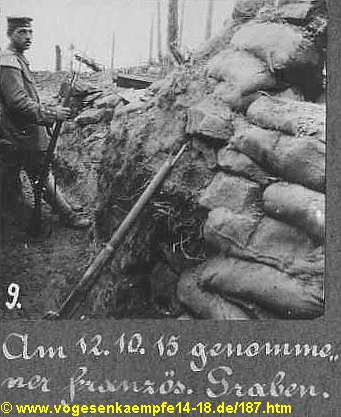

We return through the trench, upward the Lingekopf, ...
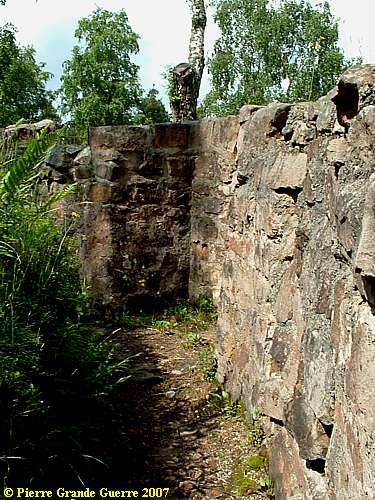
... to visit the 2nd German line.
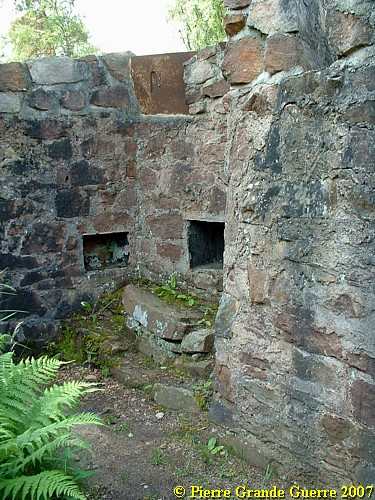
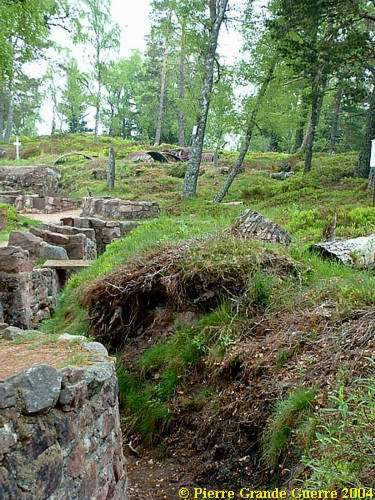
Behind the northern observation blockhaus on the ridge, ...

... we pass eastward the narrow ridge with this black cross, ...
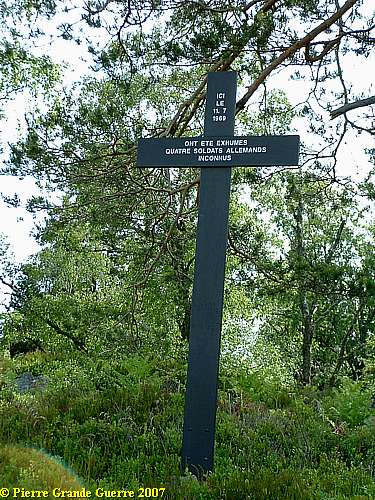
... to find our way through the communication trench, ...
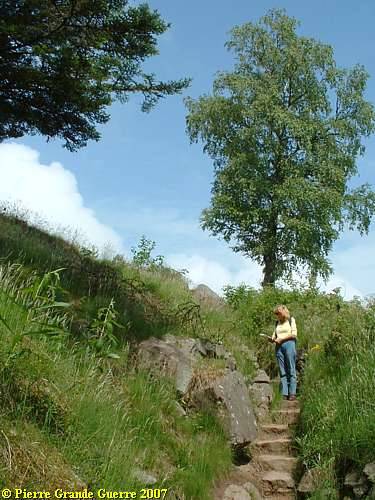
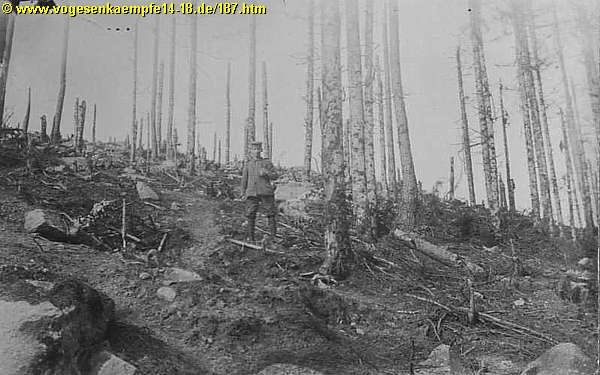
... between the lines, downward on a steep slope.
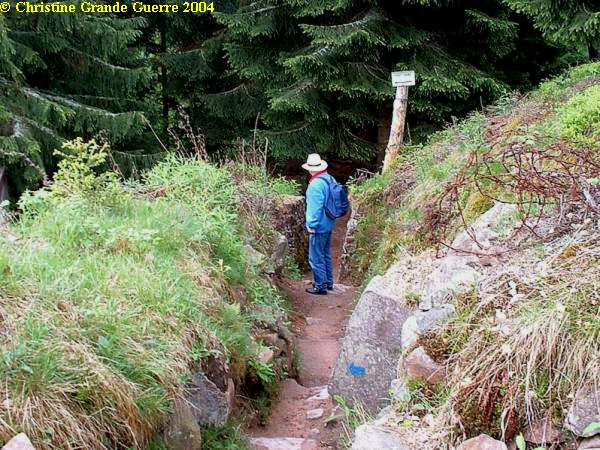
After a short turn to the north, we saw this bunker, which the French call the "Fort Carré".
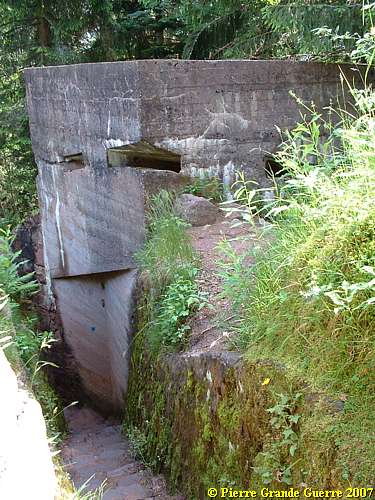
It's openings are following the surface of the rock around it.
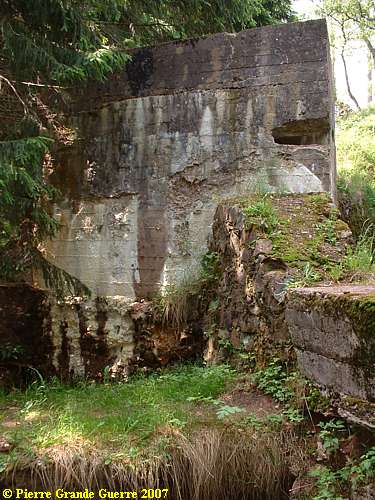
It's concrete roof is about 1 m. thick.
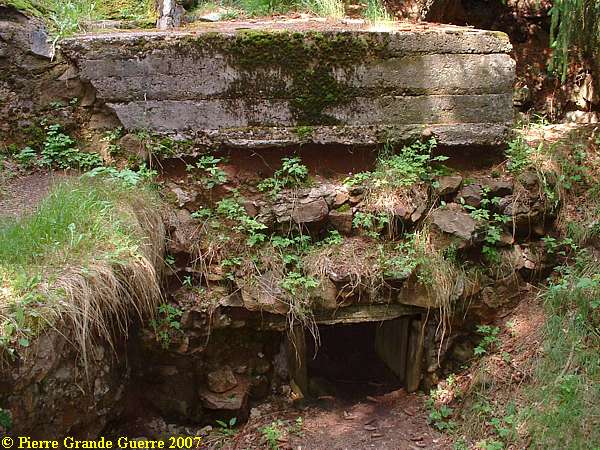
The entrance of the 3 story bunker is in the 2nd line trench.
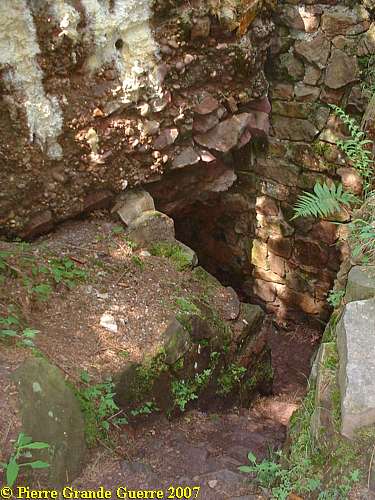
The bunker used to be connected with underground tunnels to and from the third line. Nowadays the entrance to the tunnels has been filled in.
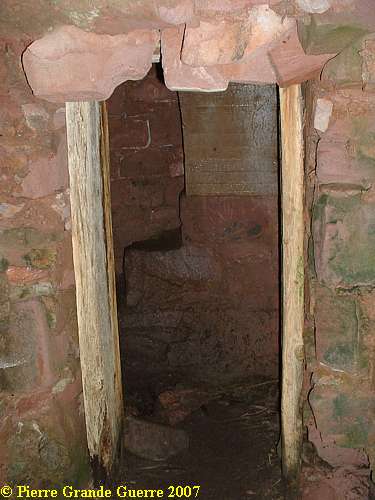
We continue through the trench southward, ...
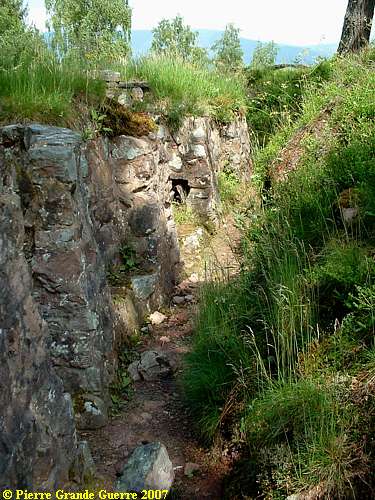
... to the most advanced point which the French reached in the German 2nd line.
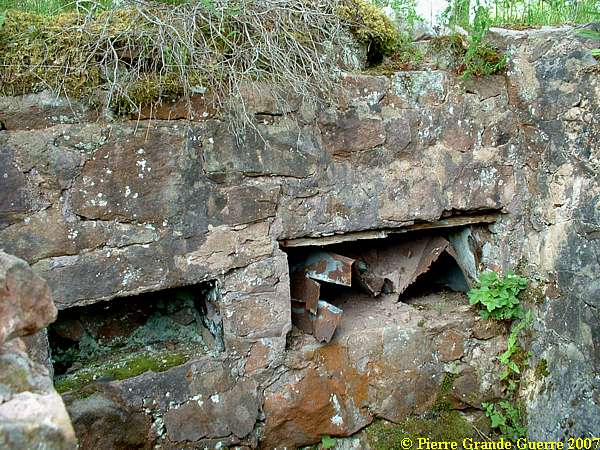
Interfered by German counter-attacks, the French would by times possess this position from 26 July until 24 August 1915.
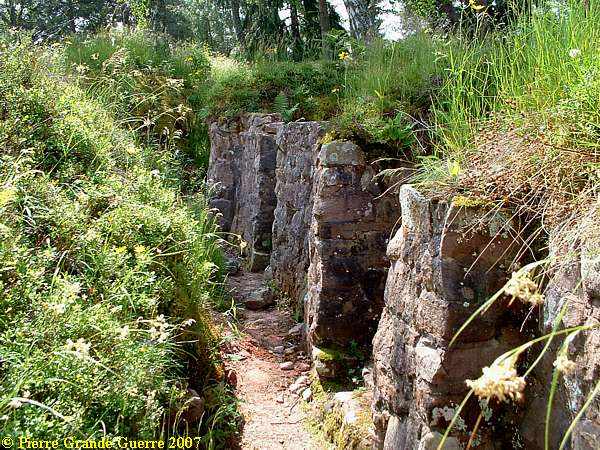
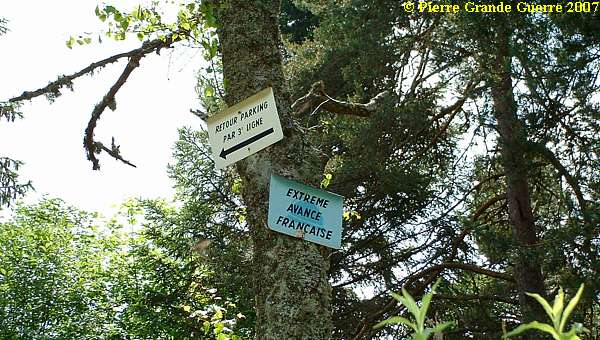
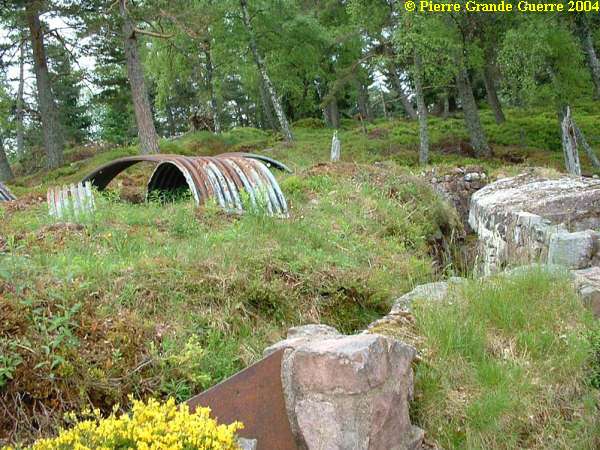
Fort Lingekopf

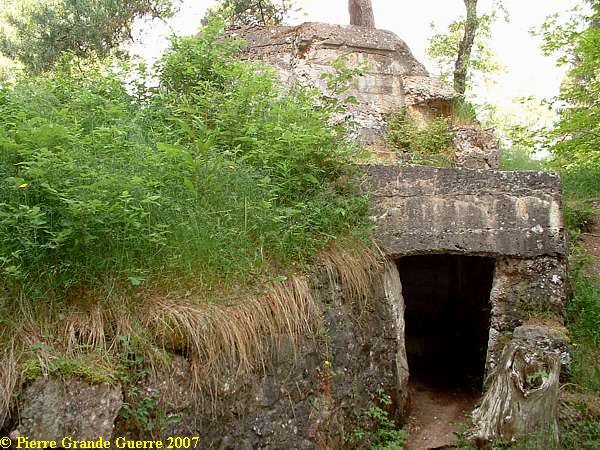
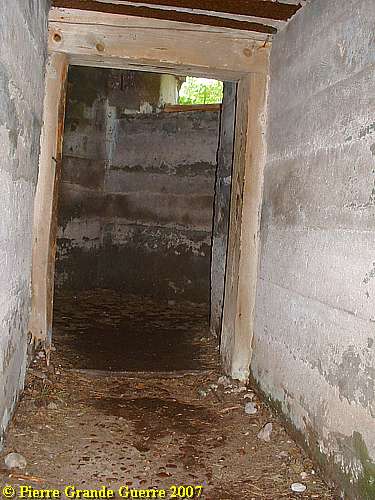
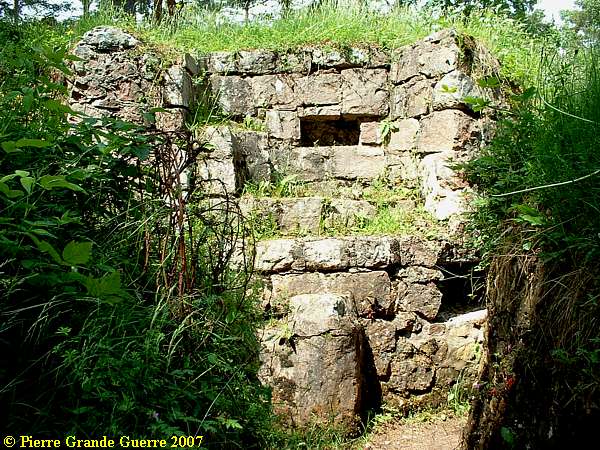
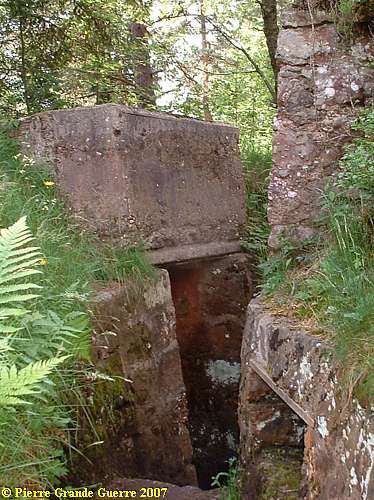
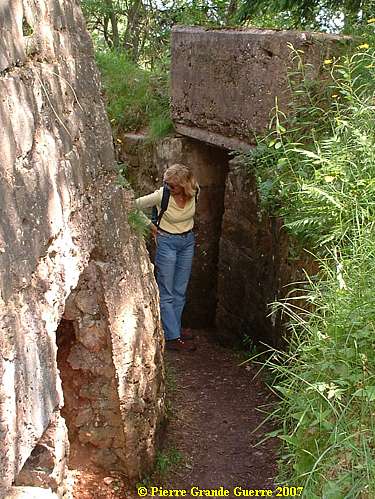
A the end of October the front stabilised, and the great battles around the pass of Le Linge petered out.
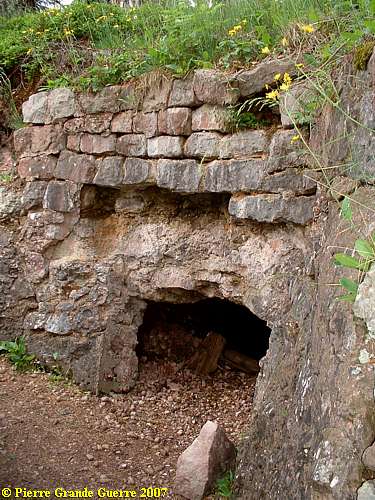
Until 1918 each party along "The Forgotten Front" reorganized and strenghtened it's defences. Both belligerent parties worked often under enemy fire.
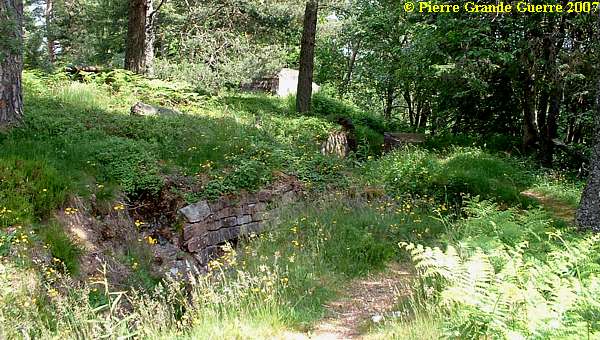
Sometimes there were still artillery duels and hand to hand combat fighting in the Lingekopf sector.
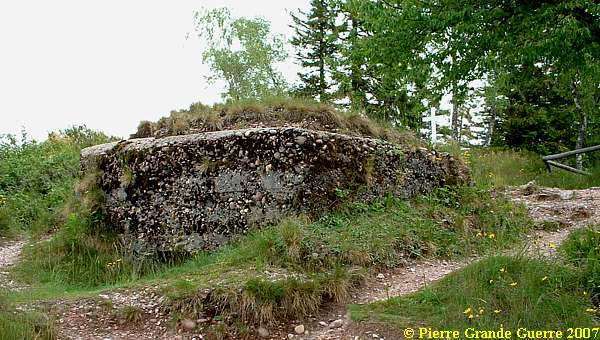
Casualties at the Lingekopf
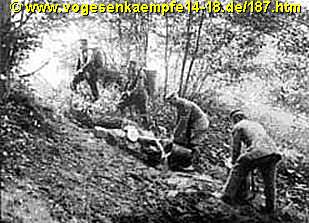
Around 4,000 French soldiers of 17 battalions of Chasseurs Alpins and of Chasseurs au Pied, died during the period of July until October 1915.
French sources estimate that 80 % of these French soldiers, fighting at le Linge, were killed.
The losses on the German side were, roughly seen, equal to those of the French.
The Collet du Linge had no strategic value.
It was not overseeing any important east-west roads.
At least around 8,000 German and French men were killed in this battle in 1915 without any strategic progression!
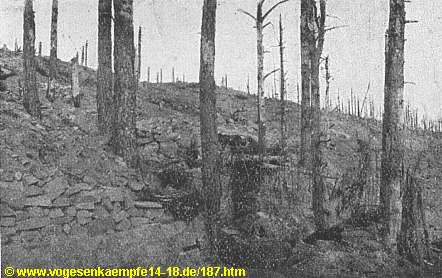
In the meantime we have arrived back at the southern slope of the Lingekopf.

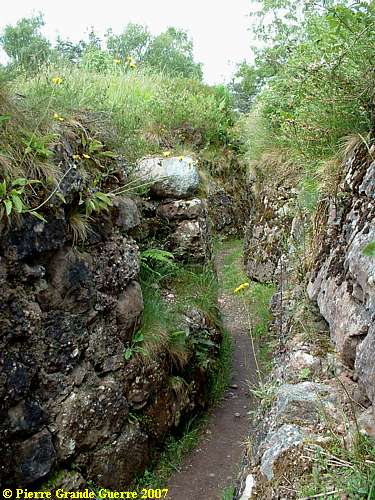
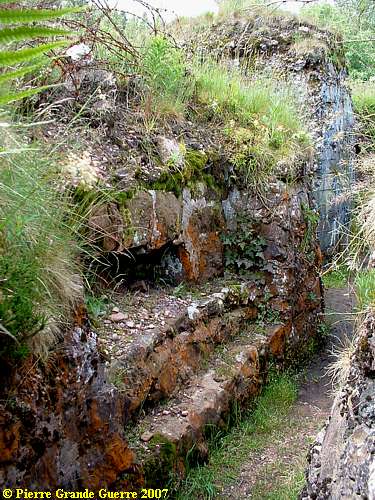
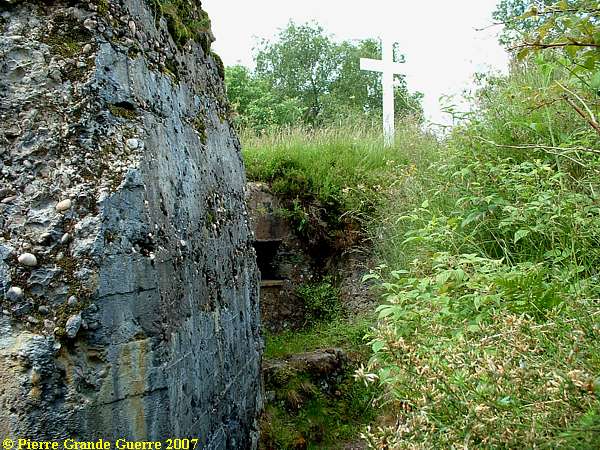
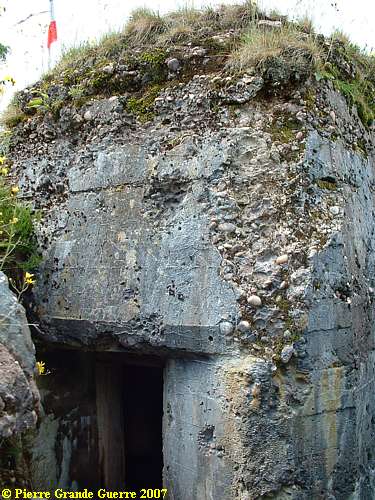
The base of a trench mortar, ...
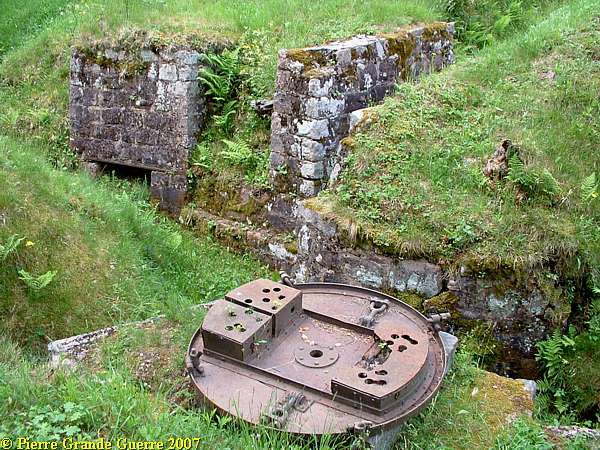
... and the relics of a German field oven.

A last view northward to the 2nd German line.
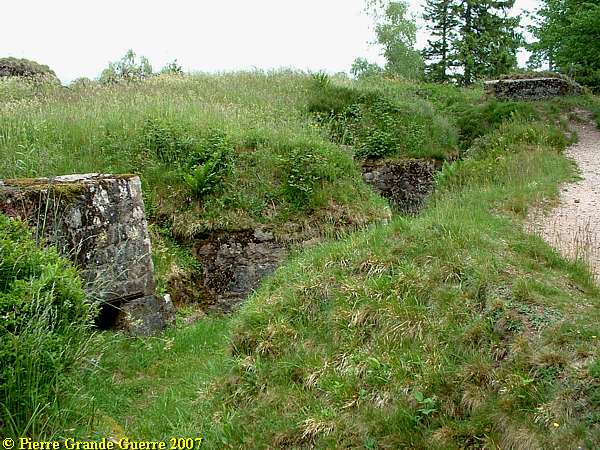
Back at the parking of the battlefield, I advise you to visit the "Mémorial du Linge" Museum, ...
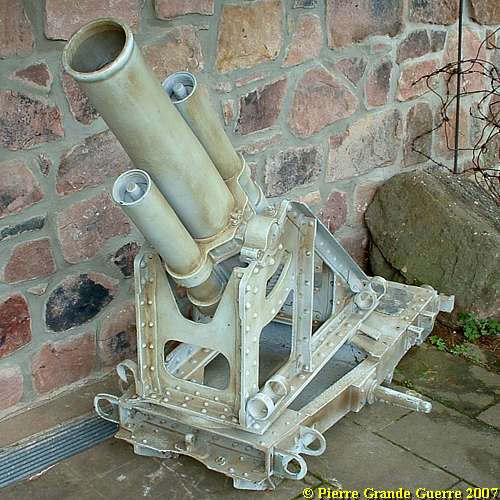
...to watch an interesting historic movie about the French mountain warfare in the Vosges, and about the transport of supplies and troops under harsh conditions from Gérardmer to these summits.
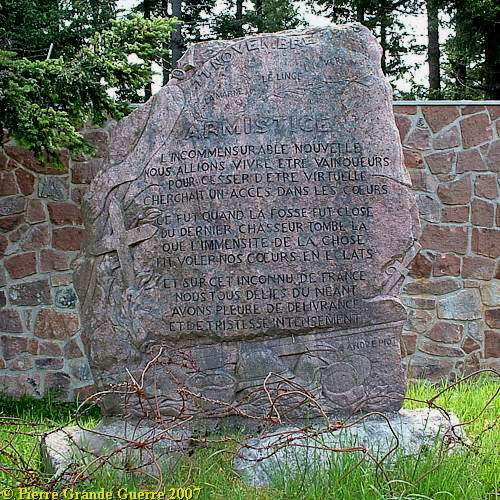
On the next photo page we continue with our explorations of the Lingekopf-sector with the Kleinkopf and the Barrenkopf. Continue to the next chapter: " Kleinkopf - Barrenkopf ".
Period pictures Courtesy of Herr G.F. Dose, © http://net.lib.byu.edu/estu/wwi/dose/01-Vogesen-01.htm.










